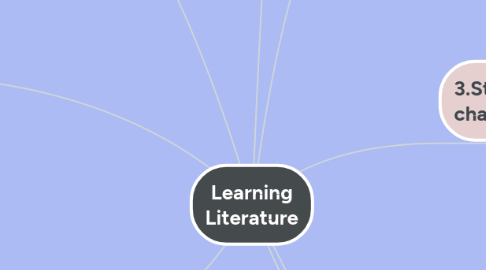Learning Literature
by rutroj sontiwattakul


1. 1. Identify the plot
1.1. Traditional
1.1.1. Introduction
1.1.2. Conflict
1.1.3. Rising action
1.1.4. Climax
1.1.5. Falling action
1.2. Departs from plot conventions
1.2.1. a cliff -hanger ending
1.2.2. jump around in time
2. 2.Determine the identify of the narrator
2.1. A third-person omniscient
2.1.1. can see in to every character's thoughts and knows everything
2.2. A third-person limited
2.2.1. knows some character's thoughts
2.3. A first-person
2.3.1. knows only her own thoughts
3. 3.Study the characters
3.1. Protagonist
3.1.1. The main character of a story
3.2. Antagonist
3.2.1. The person who create problems for protagonist
4. 4.Examine the setting
4.1. gives the reader information about the events
4.2. The worldviews the character espouse
4.3. Indicates that the text belongs to
4.3.1. fantasy
4.3.2. science fiction genre
5. 5.Identify symbolic language and images
5.1. Do not convey all of their ideas literally
5.1.1. figurative devices
5.1.1.1. metaphor
5.1.1.2. hyperbole
5.2. Symbols require readers to use their imagination to see a thing or idea
6. 6.Figure out what the text is about
6.1. Themes are the topic abstract
6.1.1. racism
6.1.2. gender
6.1.3. small-town life
6.1.4. family
6.1.5. child hood
6.1.6. prejudice

